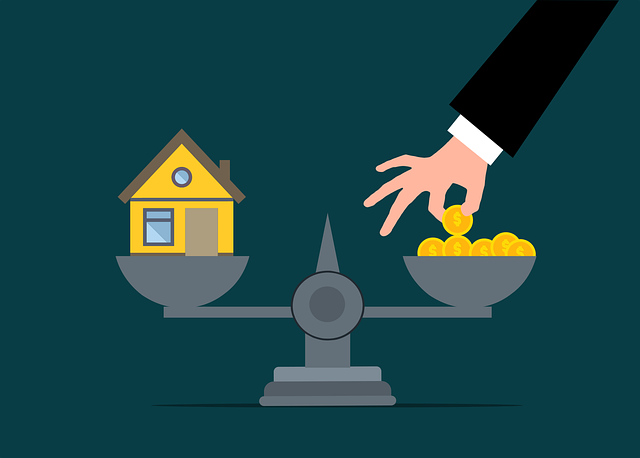Debt consolidation offers a strategic solution to manage multiple loans by combining them into a single loan with lower interest rates. This approach simplifies budgeting, reduces the hassle of tracking multiple payments, and can significantly decrease overall debt burden. Understanding different types of consolidation loans, evaluating financial situations, and selecting reputable lenders are crucial steps. By carefully assessing existing debts and exploring various consolidation options like personal loans or financial counseling, individuals can make informed decisions to consolidate their debts into one manageable loan. Real-life success stories demonstrate the positive impact on financial stability and growth.
In today’s financial landscape, managing multiple debts can feel like a never-ending battle. But what if there was a way to simplify this struggle? Merging your debts into a single loan, often referred to as debt consolidation, offers a strategic approach to gaining control. This article explores the concept, unravels its benefits, and provides a comprehensive guide. From understanding different loan types to choosing the right lender, you’ll discover how consolidating your debts can be a powerful tool for financial freedom.
- Understanding Debt Consolidation: Unraveling the Concept
- Benefits of Consolidating Debts into One Loan
- Types of Loans for Debt Consolidation
- Choosing the Right Lender for Your Consolidation Needs
- The Process: How to Consolidate Your Debts
- Real-World Success Stories: Debt Consolidation in Action
Understanding Debt Consolidation: Unraveling the Concept

Debt consolidation is a strategic financial move that simplifies the process of repaying multiple loans by combining them into a single, more manageable loan with a potentially lower interest rate. This approach allows individuals to ‘conquer’ their debts more effectively, making it easier to stay on track with repayments and save money in the long run. By consolidating debt into one loan, borrowers can say goodbye to the hassle of managing several loans with varying due dates and interest rates.
The concept is straightforward: borrow a new loan with a lower interest rate than your existing debts, use this fund to pay off all other loans, and then focus on repaying the single, consolidated loan. This method can significantly reduce monthly payments and the overall cost of borrowing. It’s a popular strategy for those struggling with multiple high-interest credit card debts or personal loans, offering a clearer path to financial freedom.
Benefits of Consolidating Debts into One Loan

Consolidating debts into one loan offers numerous advantages for individuals burdened by multiple payments. Firstly, it simplifies financial management by combining various debt obligations into a single payment. This streamlines budgeting and makes it easier to track and control expenses, as there’s only one due date to remember. Secondly, the process can significantly reduce overall interest costs. When debts are scattered across different loans with varying interest rates, consolidating them allows for a refinanced loan with potentially lower rates, saving money in the long run.
Additionally, a consolidated debt loan often provides better borrowing terms and flexibility. Lenders may offer extended repayment periods, resulting in smaller monthly installments, which can ease financial strain. This strategy also improves credit scores as timely payments on a single loan demonstrate responsible borrowing behavior to creditors.
Types of Loans for Debt Consolidation

When considering consolidating your debts into one loan, it’s essential to understand the various types available. The most common categories include secured and unsecured loans. Secured debt consolidation involves using an asset like a home or car as collateral, which can lead to lower interest rates but carries the risk of foreclosure if you default. Unsecured loans, on the other hand, don’t require collateral but typically offer higher rates and stricter credit requirements.
Within these types, options range from personal loans from banks or credit unions to balance transfer cards offering low-interest periods. Federal student loan consolidation is also a popular choice for borrowers with multiple educational loans. Each type has its advantages and disadvantages, so evaluating your financial situation and comparing rates is crucial before deciding on the best way to consolidate debt into one loan.
Choosing the Right Lender for Your Consolidation Needs

When considering consolidating your debts into one loan, selecting the appropriate lender is a pivotal step in the process. It’s not merely about finding a low-interest rate but also ensuring the lender aligns with your financial goals and offers terms that suit your needs. Researching different lenders allows you to compare their consolidation services, repayment plans, and any additional benefits or protections they provide.
Look for lenders specializing in debt consolidation who can offer personalized solutions. They should have a clear understanding of the various types of loans and be able to guide you in choosing the right one based on your unique financial situation. Additionally, check their reputation, customer reviews, and transparency in communication to ensure a trustworthy partnership during this significant financial decision.
The Process: How to Consolidate Your Debts

Merging your debts into a single loan, or consolidating debt into one loan, involves strategic planning and understanding various options. The first step is to assess all your existing debts, including credit cards, personal loans, and any other outstanding balances. Create a comprehensive list detailing each debt’s balance, interest rate, and repayment terms. This step allows you to gain clarity on the full extent of your financial obligations.
Once you have a clear picture of your debts, explore consolidation options. One common approach is to refinance your debts through a new loan with a lower interest rate. This could be done via a personal loan from a bank or credit union, or by applying for a home equity line of credit (HELOC). Another method is to use a debt management plan, where a financial counselor helps negotiate lower rates with creditors and structures a repayment plan tailored to your budget. Compare the terms of each option carefully, considering factors like interest rates, fees, and potential savings before making a decision that best suits your financial needs.
Real-World Success Stories: Debt Consolidation in Action

In the realm of financial management, there are countless success stories that highlight the transformative power of consolidating debt into one loan. Many individuals and families have embarked on this journey, finding themselves in a stronger position after merging multiple debts into a single, manageable payment. This strategy is not just a concept; it’s a proven method to simplify financial lives and reclaim control over personal finances.
For instance, consider the case of Sarah, who found herself burdened by three credit card debts totaling over $10,000. Through strategic debt consolidation, she was able to secure a loan with a lower interest rate, allowing her to pay off all her debts in just 3 years—a significant reduction from the original repayment timeline. Similarly, John, an entrepreneur, used debt consolidation to merge business loans and credit lines, streamlining his financial obligations and freeing up cash flow for expansion. These real-world examples underscore how consolidating debt into one loan can lead to financial stability, reduced stress, and opportunities for growth.















